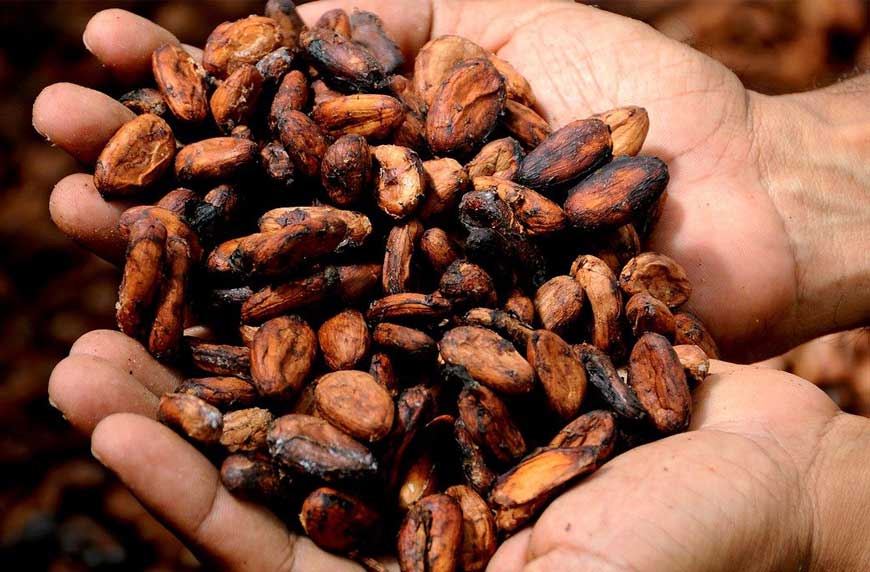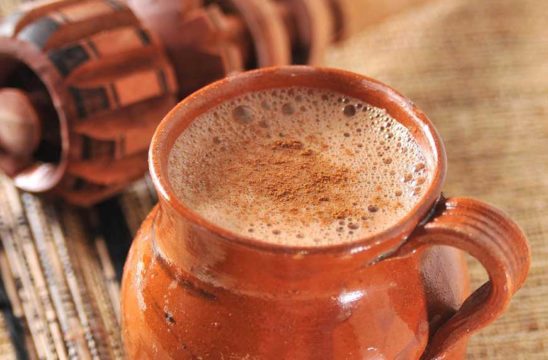- You have no items in your shopping cart
- Continue Shopping

Chocolate is made from the fruit of cacao trees, which are native to Central and South America. The fruits are called pods and each pod contains around 40 cacao beans. The beans are dried and roasted to create cocoa beans.
It’s unclear exactly when cacao came on the scene or who invented it. According to Hayes Lavis, cultural arts curator for the Smithsonian’s National Museum of the American Indian, ancient Olmec pots and vessels from around 1500 B.C. were discovered with traces of theobromine, a stimulant compound found in chocolate and tea.
It’s thought the Olmecs used cacao to create a ceremonial drink. However, since they kept no written history, opinions differ on if they used cacao beans in their concoctions or just the pulp of the cacao pod.
Chocolate production begins at the cocoa tree, where cocoa pods containing cocoa beans in a cotton wool-like pulp are harvested between October and December. The beans are placed between layers of banana leaves for six days to drain the pulp away, a method known as ‘heap’, before being dried in the sun, packaged and sent to a factory for chocolate making.
Inside a chocolate factory, the beans are heated inside a continuous roaster as they travel along a conveyor belt. The time of this process varies depending on the flavour required. Once suitably roasted, they are broken down into small pieces and their brittle shells are removed, leaving only the meaty centres of the beans, the ‘nibs’, which contain the essential cocoa butter for chocolate production. A mill grinds these nibs into a thick brown liquid known as ‘cocoa liquor’, the basis of all chocolate products, which is then mixed with varying amounts of sugar and milk depending on the required type of chocolate. Typically, dark chocolate consists of 70% cocoa liquor, while milk and white chocolate have 30%.
Vacuum ovens then dry this mixture into what is known as a chocolate ‘crumb’, before giant rollers squash the liquid together. It is then grinded between rollers to improve the silky texture, before being smoothed even further in a process known as ‘conching’. This involves kneading the mixture in giant tanks at about 46°C, with the very best chocolate being conched for more than a week. The final process is tempering, where the liquid is continuously cooled and heated in a cycle until it is a stable chocolaty consistency.
After this stage of the chocolate-making process, the liquid can be poured into moulds, cooled and wrapped at high speeds to make products like bars of chocolate. To make chocolate with a particular filling, such as caramel, the insides of the bars pass along a conveyor belt and are ‘enrobed’ by the liquid chocolate before being cooled and wrapped.
Sources:
http://www.history.com
https://www.howitworksdaily.com



